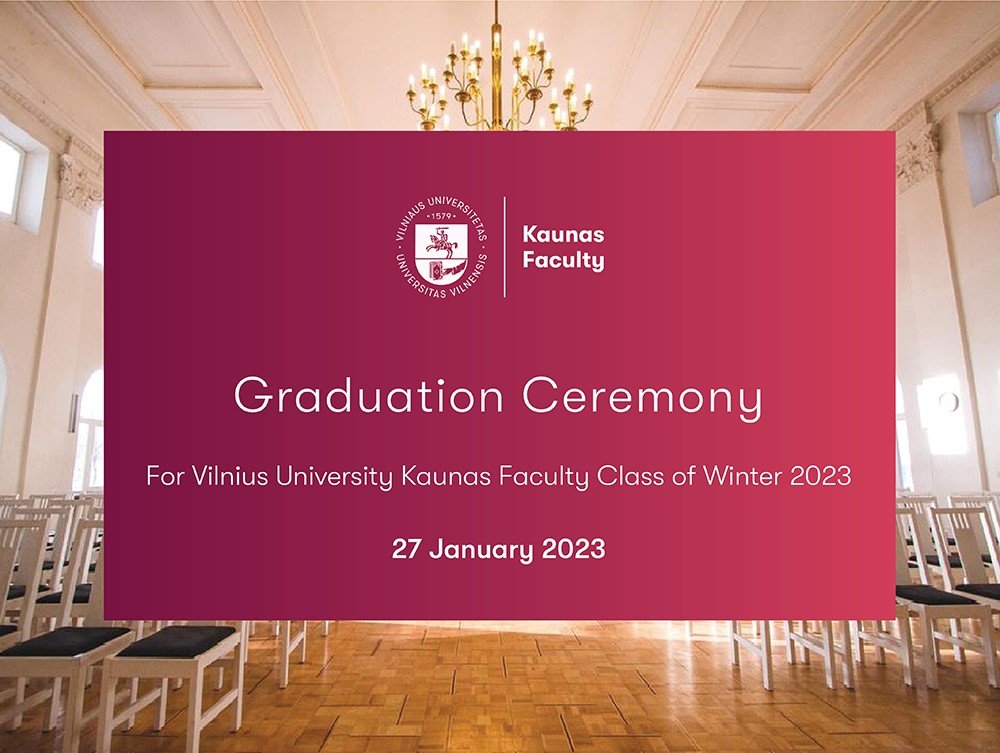The event is organized under the initiative of the Baltic-German University Liaison Office in cooperation with Prof. Vladas Gronskas seminar series.
Venue: Vilnius University Kaunas Faculty, Muitinės Str. 12, Kaunas, Auditorium No. X.
Local event organizer: Prof. Vladislav V. Fomin, Prof. Remigijus Ciegis, and Dr. Rasa Bartkute
Event time: Thursday, 2 March 2023, 14:30-16:30
The link for registration:https://forms.gle/p61KXgr52vLid5fL9
Live broadcast of the seminar: https://www.youtube.com/watch?v=0BPMokhXBW8
Presenters:
Dr. Thor Möller: "Implementation of Digital Transformation in Organisations”
To manage the digital transformation of companies is a long-lasting endeavor undertaken. Next to the technical challenges there are huge requirements for organizational and social transformations. To master this a set of strategical programmes and projects is needed. This presentation provides ideas about designing and implementing digital transformation programmes and projects.
The focus is on organisational and social aspects. It starts with some chances and challenges of digitisation: technically, organisationally and socially. Then it provides ideas about the general approach to manage it. This could be by Multi Project Management (MPM) or the method Objective and Key Results (OKR). Finally it takes the perspective of employees in charge and how to manage these stakeholders.

About the speaker:
Dr. Thor Möller is the former President of GPM German Project Management Association and well-known expert in project management in Germany and all over the world. He has published more than 10 books about PM and developed different national and international standards in PM. Different associations and universities awarded him for his expertise and performances, including The International Project Management Association’s (IPMA) Award for Excellent Project Management Performance. Today he is owner of four small companies in Germany with 50 employees in total.
Free e-books on Project Management by Dr. Thor Möller
Dr. Vita Juknevičienė, Dr. Rita Toleikienė: "Development of E-Leadership in Municipal Administrations”
COVID-19 global spread as crisis-induced situation required public sector, including municipal administrations, to react immediately and find new organizational and managerial ways to continue performing effectively under the pandemic circumstances. Digitalization of daily routines became mandatory, including those of leadership, which are known to be difficult to perform in remote digital format. This presentation will share the results of research on e-leadership development in municipal administrations in Lithuania, Latvia, Estonia and Germany. Comparative assessment of pre-pandemic and pandemic periods in Lithuania will be also presented, as well as best practices and key challenges of e-leadership.


About speakers:
Dr. Vita Juknevičienė and Dr. Rita Toleikienė represent the international researchers’ team: Dr. Vita Juknevičienė and Dr. Rita Toleikienė (Vilnius University Šiauliai Academy, Lithuania), Dr. Irma Rybnikova (Hamm-Lippstadt University of Applied Sciences, Germany), Dr. Iveta Reinholde and Dr. Inese Abolina (University of Latvia, Latvia). The team is involved in two scientific projects of the Baltic-German University Liaison Office, supported by the German Academic Exchange Service (DAAD) with funds from the Foreign Office of the Federal Republic Germany: “E-Leadership in Local Government Organizations” (2019) and “E-Leadership in Municipal Administrations: the Post-Pandemic Analysis (E-LEADER)” (2023). They have scientific expertise in different fields such as organizational studies and leadership, public administration and political sciences. The speakers have also published on e-leadership in public sector.
Scientific publications on e-leadership may be found here and here
Prof. Guntis Arnicāns: “The Second Wave of Digital Transformation of Companies in Latvia and What We Can Learn from It”
After regaining the independence of the Baltic states in the early 90s of the last century, the latest Western technologies and computer equipment entered these countries more and more. That gave a lot of momentum to the restructuring of the company's operations. The digitalization of companies during the Soviet era was at a relatively weak level and it can be considered that the second wave of digitalization began. The presentation examines examples of the approaches of that time, introducing IT technologies into the life of the company. On the one hand, those were "ancient times of IT", but now the situation is completely different. On the other hand, we can also now use the experience and lessons learned at that time.

About the speaker:
Guntis Arnicāns is a professor and ex-dean of the Faculty of Computing at the University of Latvia and the Chair of the Laboratory for Innovative information technologies at the Faculty of Computing. His research interests include software testing, large-scale information displaying, natural language processing, ontologies, multi-agent systems, databases, and data integration. He teaches data structure, algorithms, algorithm analysis and optimization, software testing, software engineering for almost 30 years. At the same time, he has more than 20 years of experience in the industry, developing various IT systems. As a result, practical knowledge and skills have been acquired in various positions such as: Programmer, Software Tester, Trainer, System Analyst, IT Project Manager, Manager of Information Systems Development Department, Manager of IT Department, etc.
 Vilnius University Kaunas Faculty (www.knf.vu.lt)
Vilnius University Kaunas Faculty (www.knf.vu.lt)












